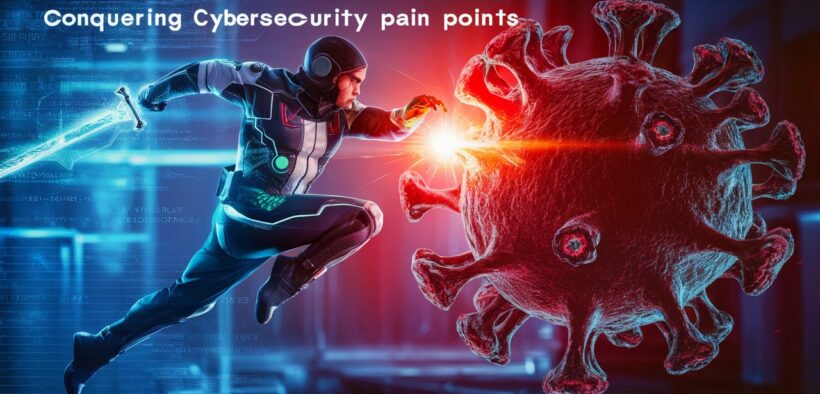Conquering 7 Cybersecurity Pain Points: Expert Strategies for Businesses and Users
Share

In today’s digital age, where our data and online activities are constantly under scrutiny, robust cybersecurity is no longer a luxury, it’s a necessity. However, navigating the complex world of cybersecurity can be a daunting task, riddled with frustrations for both businesses and individual users. This article delves into the seven most common cybersecurity pain points of businesses and individuals, offering expert-driven strategies and actionable tips to empower you to conquer these challenges and build a more secure digital future.
Intricate Security Maze:
- Businesses: Implement a threat intelligence program that incorporates curated feeds and automated vulnerability scanning to proactively identify and prioritize emerging risks.
- Users: Subscribe to reputable cybersecurity publications and leverage free online resources offered by established institutions to build foundational knowledge.
User Experience Hurdles:
- Businesses: Employ a risk-based MFA strategy, prioritizing critical applications and functionalities while exploring user-centric authentication methods like biometrics. Foster a culture of cybersecurity through engaging security awareness training programs.
- Users: Utilize password management tools that adhere to industry best practices for secure password storage and generation. Advocate for collaborative security initiatives within organizations to bridge the gap between IT and everyday users.
Budgetary Tightropes:
- Businesses: Conduct thorough risk assessments to prioritize security investments. Explore open-source security solutions in conjunction with commercially available tools for a cost-effective approach.
- Users: Leverage freemium security software that offers basic protection features. Participate in free cybersecurity webinars hosted by industry leaders to gain valuable insights and threat awareness.
False Positive Fatigue:
- Businesses: Implement Security Information and Event Management (SIEM) solutions to correlate and analyze security alerts, enabling the identification and prioritization of genuine threats. Utilize machine learning techniques to automate the filtering of false positives.
- Users: Educate yourself on the common indicators of a phishing attempt, such as misspelled URLs, generic greetings, and a sense of urgency. Report suspicious emails to the appropriate authorities to contribute to improved email filtering systems.
Disruptive Update Rollercoaster:
- Businesses: Conduct thorough patch testing in isolated environments before deploying critical updates to production systems. Leverage update management tools for streamlined and automated rollouts.
- Users: Schedule automatic updates for non-critical applications on personal devices. Consider off-peak hours or weekends for manual updates to minimize disruption.
Privacy vs. Security Tightrope Walk:
- Businesses: Implement data anonymization techniques whenever possible to minimize the amount of personally identifiable information (PII) collected. Clearly communicate data collection practices in concise and user-friendly privacy policies.
- Users: Utilize privacy-focused browser extensions to block unwanted data collection and tracking attempts. Regularly review and adjust privacy settings on social media platforms and online services.
Phishing’s Shapeshifting Threat:
- Businesses: Conduct regular phishing simulations to train employees on identifying and reporting suspicious emails. Implement email authentication protocols like SPF, DKIM, and DMARC to significantly reduce the effectiveness of spoofed email attacks.
- Users: Maintain a healthy skepticism towards unsolicited requests for personal information. Hover over links before clicking to verify their legitimacy. Utilize two-factor authentication (2FA) whenever possible for an extra layer of login security.
You would be interested to read the article: Top 10 SMB Cybersecurity Mistakes to Avoid
The cybersecurity landscape is a dynamic battleground, with threats constantly evolving. While these pain points may seem daunting, they are not insurmountable. By adopting a proactive approach, implementing the strategies outlined above, and fostering a culture of cybersecurity awareness, both businesses and users can create a more secure digital environment. Remember, cybersecurity is a continuous journey, not a destination. By staying informed, remaining vigilant, and adapting your strategies, you can significantly reduce your risk of cyberattacks and navigate the ever-evolving online world with greater confidence.











You are a very intelligent individual!